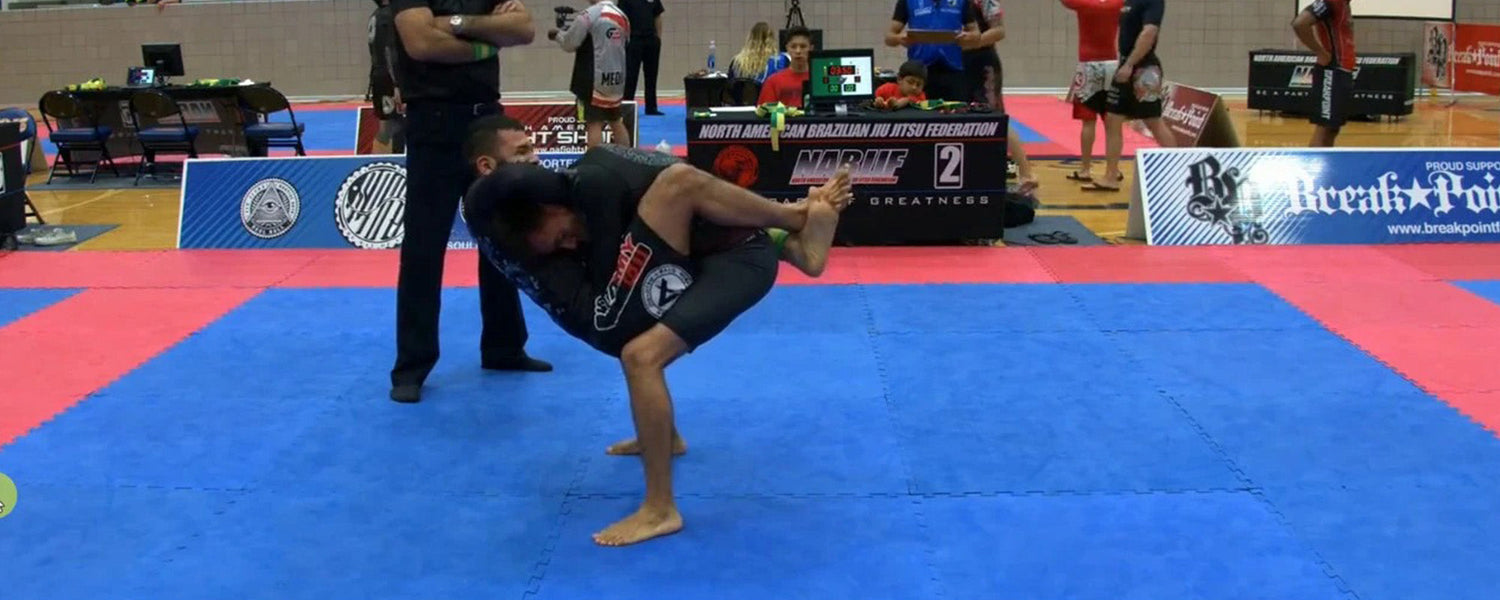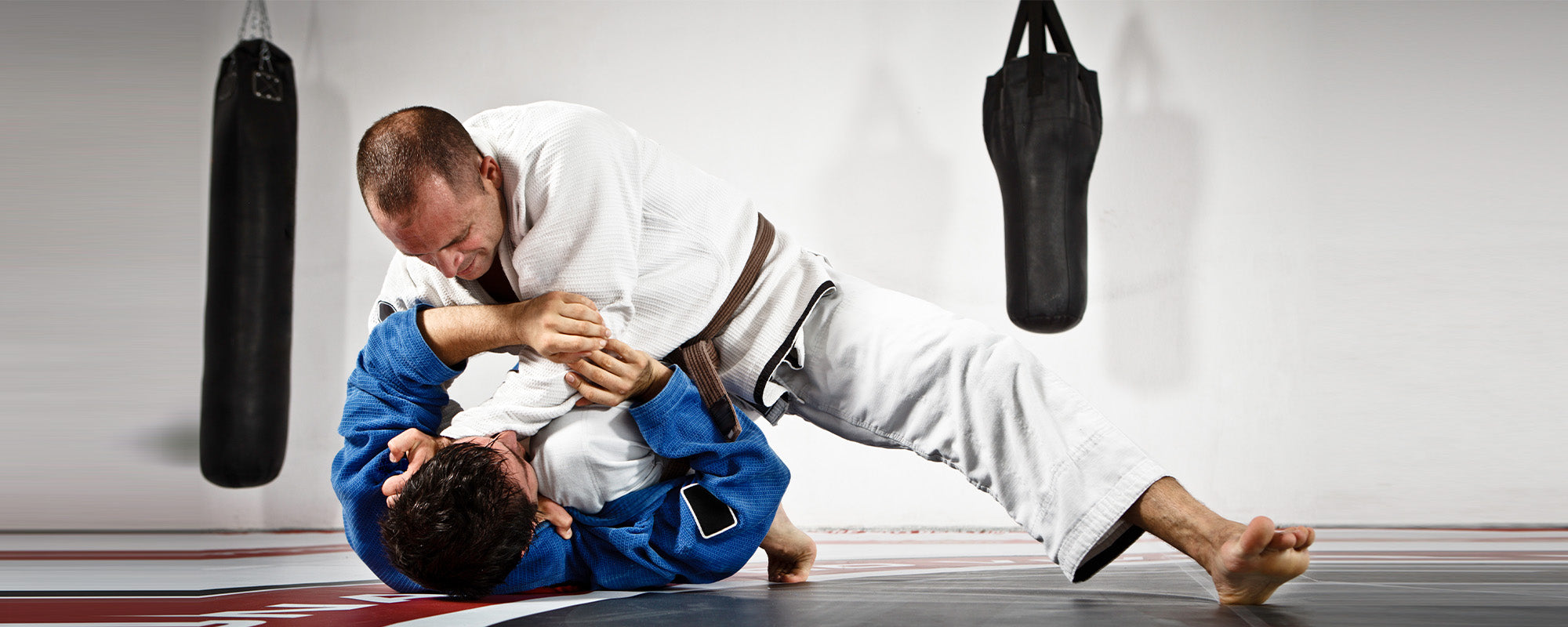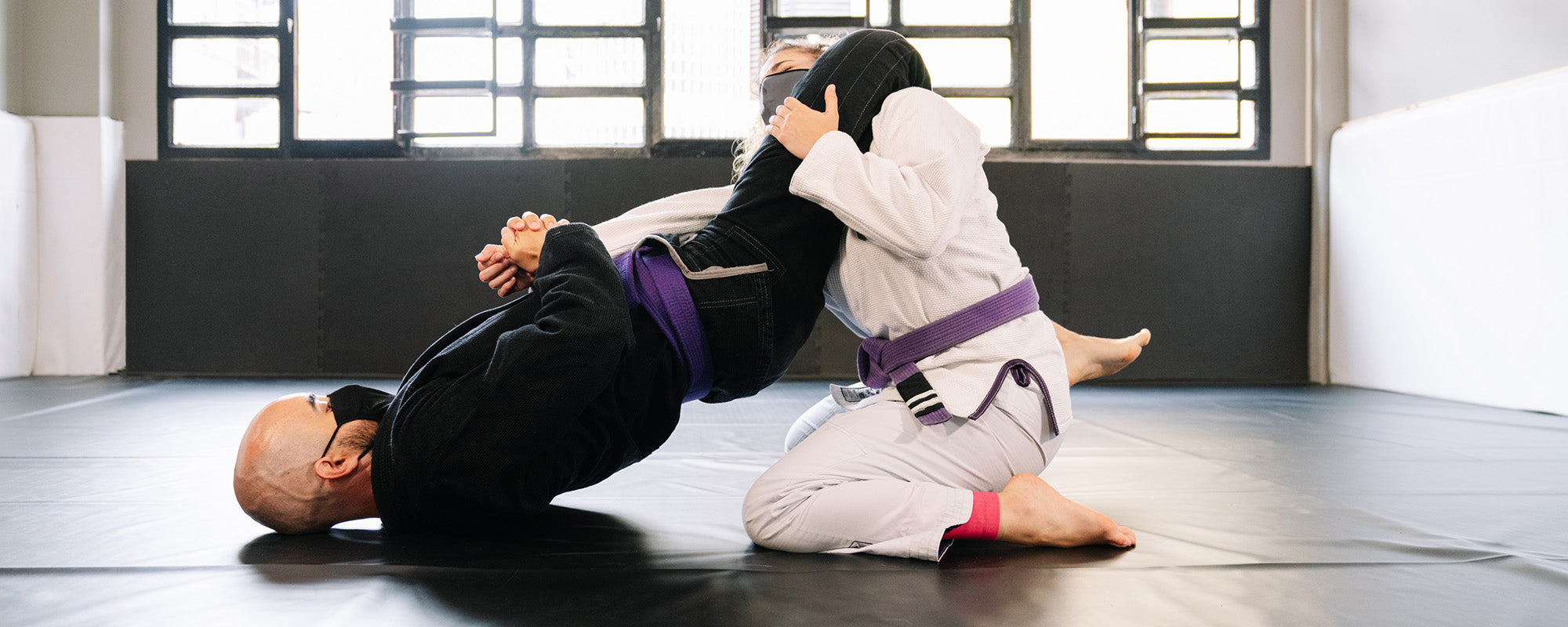Table of content
1. Introduction

Flying Guillotine Choke is a submission method that is used in the Brazilian arts of jiu-jitsu, and it is also part of various martial arts. It originated from the martial arts of Judo where it is named the Mae Hadaka Jime. Guillotine Choke is the front rear neck choke that can be applied from the standing and also from the ground position.
This submission method targets the front area of the neck, which is why it is often called the front neck choke. The fighter is required to use the arm that is encircled around the neck of the opponent. As this entanglement resembles the Guillotine, it is named after it.
The blade of the arm resists the airflow due to the immense pressure. The opponent immediately taps for the submission. It is the defense tool of a double-leg takedown.
Flying Guillotine chokes are often used by the armies to defend themselves. The US Army trains its soldiers to attain the skill of Guillotine Choke.
It can be applied to various positions. In this article, we will explore the 10 best ways to employ the Flying Guillotine Choke. We will dive deeper to get to know about the useful tips that will help you to compete on the mat.
2. What is a Flying Guillotine Choke?
Flying Guillotine Choke is a submission method that is part of various martial arts. It is the most effective method to submit the opponent. It is the choke that has been originated in the past and used in various martial arts. The flying Guillotine choke is applied with the arm wrapped around the front of the neck.
3. How does the Guillotine Choke Work?

Guillotine Choke is a self-defense submission method that is used in multiple martial arts. A guillotine choke is applied by grasping the head of the opponent under the armpit and meanwhile, using the forearm to hold the neck. As the choke is applied, it restricts the airflow and creates pressure on the carotid arteries. A guillotine choke is applied with the use of the forearm it chokes the flow of air and blocks the air pipe.
Guillotine Choke is very effective for takedowns, it can be executed from various positions and also from the standing position. Flying guillotine chokes the blood and air at the same time. It cuts off the supply of blood to the brain. If the guillotine choke is applied for a longer duration then it can put the opponent in the unconscious state.
4. 10 Ways to Perform a Guillotine Choke
There are a lot of ways to execute the guillotine choke. In the Brazilian art of jiu-jitsu, it is the most popular method that is used to take control of the individual head. In this choking submission, the fighter grabs the head and squeezes the neck until they stop struggling and go for a tap.
4.1. Guillotine Choke from Standing
A guillotine choke can be applied from the standing position, it is the basic choke but the intensity can be increased with new variations by applying a guillotine choke from the front of the neck.
Stay firm and set on the guillotine choke by a takedown, and put their head downwards and encircle your hand around the neck of the opponent in a standing position. The wrap of the arm should be instant and place the forearms against the other. Put the pressure that seizes the neck area.
4.2. The Use of Arm and Hand
Another type of guillotine choke is with the use of the arm and the grip of the hand. In the standing position, you are required to hold the neck of the opponent with the arm just like the basic guillotine choke. But this time instead of holding your own arm you need to put your arm under their bicep. Now the next step is to use the other arm to make a choke and hold your wrist with it. In this way, you can block the air and blood flow.
4.3. Guillotine Choke from the Ground
If the fighters are in the standing position the first step is to take the opponent to the ground fighting. Your back should face the ground, meanwhile, you use the guard position by placing your legs around the opponent.
The next attempt is to grab the arm of the opponent and reach the head of their head. Turn their head towards one side and hold it tight with the arm.
Once you get firm control over the head, the last step is to put the leg around the opponent and secure it with a lock. Finish the guillotine choke after having a secure grip.
4.4. Guillotine Choke and Combat
The guillotine choke is also used in mixed martial arts to submit the opponent. The fighter can employ the choke as the opponent approaches towards the legs. You can hold them tight with the arm that is moved around the neck area. Hold the wrist with the right hand to secure the grip. This method will leave them suffocated because of the lack of airflow.
In combat art, the fighter can either use the reverse method by gripping the opponent with the arm the fighter can keep the underneath hand on the other arm and to finish the submission the fighter can place the chin on the head of the opponent.
4.5. Reverse Guillotine Choke
Guillotine Choke also has the variation of the reverse choke, this technique is surprisingly unpredictable and can leave the opponent astonished. It is a choke that resembles the Darce choke. A reverse guillotine choke is applied with the use of arms. Place the arm under the neck of the opponent and rest their head on your chest. Once you secure that position then rest your chin on their head for the finish you can use the butterfly hook.
4.6. One-arm Guillotine Choke
The one-arm guillotine is a very effective submission method that is also an unpredictable move. As the opponent wanted to escape, at that position you can hold the neck of the fighter by placing your arm around. The next important step is to keep the head in the middle of the chest so that there will be no way to escape from the guillotine choke.
4.7. The Steady Elbow Grip
When the fighter is in the standing position, he can apply the Guillotine Choke with the use of the elbow. All you need to do is to target the neck of the opposer. This is to be done by bending the opponent downward, while the two fighters are in the standing position. The face of the opponent will face the mat, then the fighter needs to grab the front part of the neck with the use of the arm. Meanwhile, use the other arm to make a strong grip so that the elbow will face in the upward direction and push it in the backward direction which will increase the grip of the flying guillotine choke.
4.8. The Use of All Fingers
In the submission method of the guillotine choke the placement of the hand plays a significant role. As it helps you to get a firm grip and support over the opponent. In the guillotine submission, the grappler needs to use the mobility of the arm.
In this choke both of the fighters are in the standing position, one of the fighters takes the opponent's head in the down position. At the same time, the fighter places the head on the shoulder of the opponent and holds the front part of the neck with both of the hands. The grips get stronger with the tight placement of all fingers that makes a strangle.
5. Guillotine Choke and Self Defence
The flying guillotine choke is the most effective air choke in jiu-jitsu. To escape from it you need to target the hands, arms, and the space in between. To get out of the headlock you are required to put more focus on the movements of the hands.
Make sure not to let the fighter grip you completely, focus on the alleviation of the pressure. Don't let the fighter block your head completely, as this position will let them control the neck and the overall body.
The more significant step is to place your head at some place, you can place your head at the chest of the opponent and then target the hands to defend yourself.
6. Useful Tips to Employ the Flying Guillotine Choke
Flying Guillotine choke is a submission method that is often used in the Brazilian jiu-jitsu. It can be applied to various positions. Following are the guidelines that will help you to employ the flying guillotine choke.
- Target the opponent's head while you are in the standing or ground position.
- Try to wrap the arm around the neck, leaving no space in between.
- The significant step is to employ the correct pressure with the elbow.
- Squeeze the elbow to block the air and blood passage.
- Use all of your fingers to apply the flying guillotine choke.
7. FAQs
7.1. What are the significant benefits of the Flying Guillotine Choke?
The guillotine comes with a lot of variations, that make the fighter more competent and can make the fighter unbeatable. As you learn the different variations of the guillotine choke, it will be an essential tool in the BJJ arsenal. These guillotine variations make the grappler adaptable, and unpredictable.
7.2. Does the Guillotine Choke create severe damage to the opponent?
The guillotine choke is the submission method that blocks the air and blood following at once, is the duration of the choke is increased then it can lead to unconsciousness and then cause death.
7.3. What are the safety protocols while applying a Flying Guillotine Choke?
It has been recommended to have a firm understanding of Flying Guillotine Choke. When a fighter finds that the opponent has stopped struggling, he has to wait for him to tap or for the referee's decision. Make sure to keep the firm and steady pressure on the neck. This trick does not impede the potency of the choke.
8. Final Words
The flying guillotine choke is the most effective submission method in Brazilian jiu-jitsu, it is also a complicated one and difficult to master. It is the self-defense technique that is often used by the military soldiers.
Guillotine offers a variety of submission methods that are also unpredictable. The headlock methods are one hundred percent useful and effective. In addition, it is the best tool to put inside the BJJ arsenal. The ancient method of submission is modified with multiple applications.









Leave a comment
This site is protected by hCaptcha and the hCaptcha Privacy Policy and Terms of Service apply.